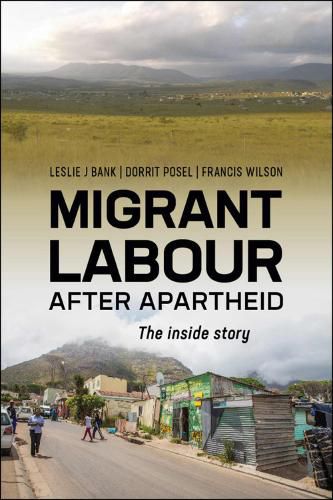Readings Newsletter
Become a Readings Member to make your shopping experience even easier.
Sign in or sign up for free!
You’re not far away from qualifying for FREE standard shipping within Australia
You’ve qualified for FREE standard shipping within Australia
The cart is loading…






South Africa is a rapidly urbanising society. Over 60% of the population lives in urban areas and this will rise to more than 70% by 2030. However, it is also a society with a long history of labour migration, rural home-making and urban economic and residential insecurity. Thus, while the formal institutional systems of migrant labour and the hated pass laws were dismantled after apartheid, a large portion of the South African population remains double-rooted in the sense that they have an urban place of residence and access to a rural homestead to which they periodically return and often eventually retire. This reality, which continues to have profound impacts on social cohesion, family life, gender relations, household investment, settlement dynamic and political identity formation, is the main focus of this book.
Migrant Labour after Apartheid focuses on internal migrants and migration, rather than cross border migration into South Africa. It cautions against a linear narrative of change and urban transition. The book is divided into two parts. The first half investigates urbanisation processes from the perspective of internal migration. Several of the chapters make use of recently available survey data collected in a national longitudinal study to describe patterns and trends in labour migration, the economic returns to migration, and the links between the migration of adults and the often-ignored migration of children. The last three chapters of this section shine a spotlight on conditions of migrant workers in destination areas by focusing on Marikana and mining on the platinum belt.
The second half of the book explores the double rootedness of migrants through the lens of the rural hinterland from which migration often occurs. The chapters here focus on the Eastern Cape as a case study of a region from which (particularly longer-distance) labour migration has been very common. The contributions describe the limited opportunities for livelihood strategies in the countryside, which encourage outmigration, but also note the accelerated rates of household investment, especially in the built environment in the former homelands.
$9.00 standard shipping within Australia
FREE standard shipping within Australia for orders over $100.00
Express & International shipping calculated at checkout
South Africa is a rapidly urbanising society. Over 60% of the population lives in urban areas and this will rise to more than 70% by 2030. However, it is also a society with a long history of labour migration, rural home-making and urban economic and residential insecurity. Thus, while the formal institutional systems of migrant labour and the hated pass laws were dismantled after apartheid, a large portion of the South African population remains double-rooted in the sense that they have an urban place of residence and access to a rural homestead to which they periodically return and often eventually retire. This reality, which continues to have profound impacts on social cohesion, family life, gender relations, household investment, settlement dynamic and political identity formation, is the main focus of this book.
Migrant Labour after Apartheid focuses on internal migrants and migration, rather than cross border migration into South Africa. It cautions against a linear narrative of change and urban transition. The book is divided into two parts. The first half investigates urbanisation processes from the perspective of internal migration. Several of the chapters make use of recently available survey data collected in a national longitudinal study to describe patterns and trends in labour migration, the economic returns to migration, and the links between the migration of adults and the often-ignored migration of children. The last three chapters of this section shine a spotlight on conditions of migrant workers in destination areas by focusing on Marikana and mining on the platinum belt.
The second half of the book explores the double rootedness of migrants through the lens of the rural hinterland from which migration often occurs. The chapters here focus on the Eastern Cape as a case study of a region from which (particularly longer-distance) labour migration has been very common. The contributions describe the limited opportunities for livelihood strategies in the countryside, which encourage outmigration, but also note the accelerated rates of household investment, especially in the built environment in the former homelands.